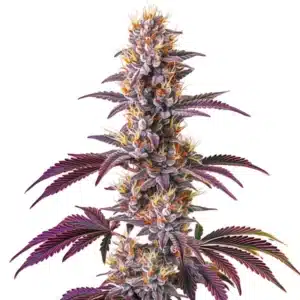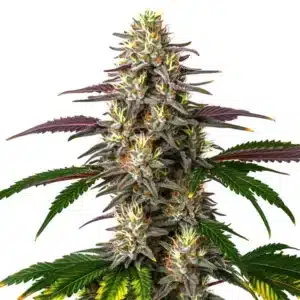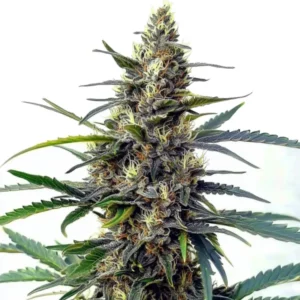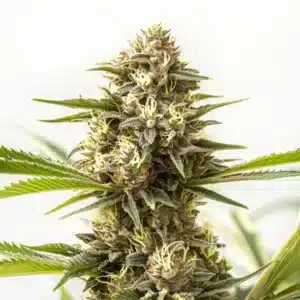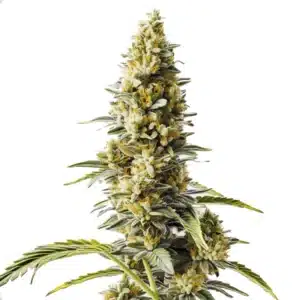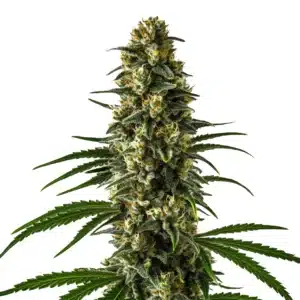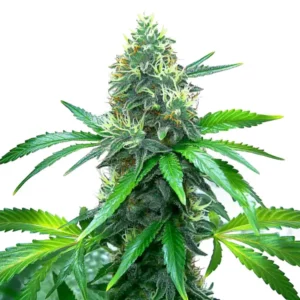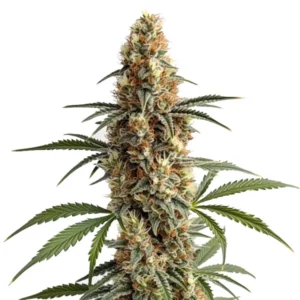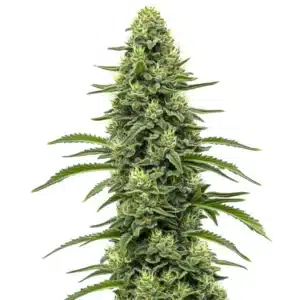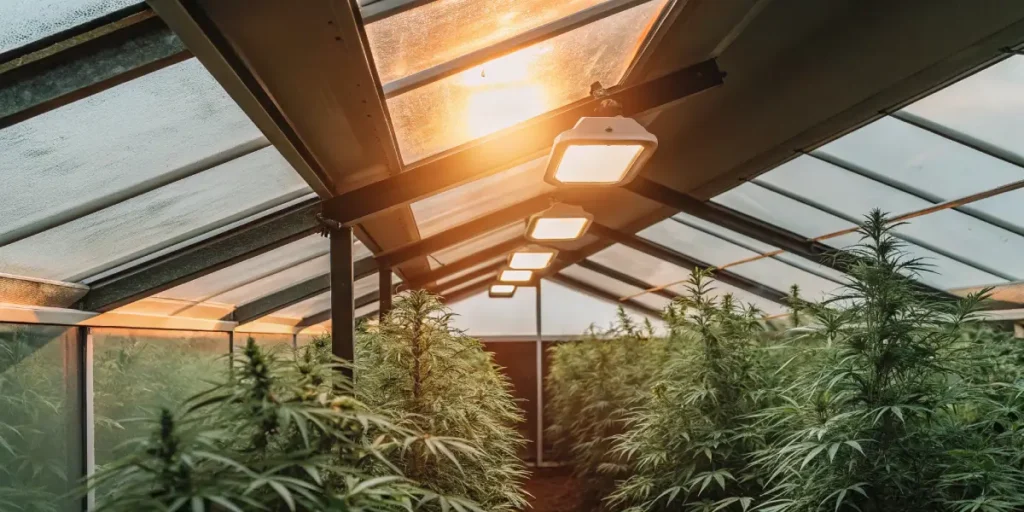
How to Grow Cannabis with Controlled Oxidative Stress
Learning how to grow cannabis with controlled oxidative stress can be a game-changer. This technique involves applying mild stress to plants, encouraging them to become stronger and yield more. Imagine a world where your cannabis plants thrive, producing potent buds with less effort.
Controlled oxidative stress in cannabis cultivation isn’t just a buzzword. It’s a proven method to enhance plant growth, vigor, and resilience. By knowing the principles behind oxidative stress, you can optimize cannabis yield through stress management.
Recommended Strains
Jack Herer
|
|
THC | 20% (Medium) |
|
|
Type | Feminized |
|
|
Yield | High |
|
|
Phenotype | 40% Indica / 60% Sativa |
Blackberry Kush
|
|
THC | 16% - 20% (Medium) |
|
|
Type | Feminized |
|
|
Yield | High |
|
|
Phenotype | 80% Indica / 20% Sativa |
Think of oxidative stress as a workout for your plants. Just like muscles grow stronger with exercise, cannabis plants can benefit from controlled stress. Let’s delve into strategies for applying oxidative stress in cannabis farming that can help you achieve bumper harvests.
Knowing Oxidative Stress in Plants
Oxidative stress occurs when plants generate reactive oxygen species (ROS) during normal metabolic processes. In excess, ROS can damage plant cells. However, in controlled amounts, they signal the plant to activate defense mechanisms.
In cannabis, controlled oxidative stress can be applied by manipulating environmental conditions. This includes adjusting light exposure, temperature, and even nutrient levels. The goal is to induce mild stress, prompting the plant to fortify itself against potential threats.
Reactive oxygen species play a dual role in plant physiology. While an excess can be harmful, the right amount of ROS can act as signaling molecules, prompting the plant to boost its antioxidant defenses. This process is vital for the plant’s ability to adapt to various stress factors.
Knowing how to grow cannabis with controlled oxidative stress involves recognizing the balance between stress and growth. By carefully calibrating environmental factors, growers can harness ROS to stimulate positive physiological responses in cannabis plants, enhancing overall growth.
Benefits of Oxidative Stress for Cannabis Plants
When managed correctly, oxidative stress can lead to increased cannabinoid production. Plants exposed to controlled stress produce more THC and CBD as a defense mechanism. This means more potent buds for your efforts.
Additionally, oxidative stress can enhance terpene profiles. These compounds give cannabis its distinctive scent and flavor. By optimizing stress levels, you can cultivate strains with enhanced aromatic and flavor qualities.
One of the primary benefits of oxidative stress for cannabis plants is improved resistance to environmental challenges. Plants that undergo controlled stress are better equipped to handle fluctuations in temperature, light, and humidity, making them more adaptable to different growing conditions.
Moreover, controlled oxidative stress in cannabis cultivation can improve nutrient uptake efficiency. Stress triggers physiological changes that help roots absorb nutrients more effectively, leading to healthier growth and potentially higher yields.
Promos & Deals
Practical Strategies for Applying Oxidative Stress
One effective way to introduce oxidative stress is through light manipulation. Gradually increasing light intensity can simulate stress, encouraging plants to adapt and grow stronger. How to grow cannabis with controlled oxidative stress involves finding the right balance—be cautious not to overdo it, as too much light can be detrimental.
Temperature fluctuations can also be used to your advantage. Exposing plants to slightly cooler night temperatures can induce beneficial stress, promoting growth and yield. Always monitor plants closely to ensure they aren’t suffering.
How to enhance cannabis growth with oxidative stress also involves leveraging humidity changes. Reducing humidity levels slightly during the flowering stage can simulate a natural stress period, encouraging plants to produce more resin as a protective measure.
Another approach is to adjust watering schedules. Allowing the soil to dry out more than usual before the next watering can induce mild drought stress, prompting roots to grow deeper and strengthen the plant’s overall resilience.
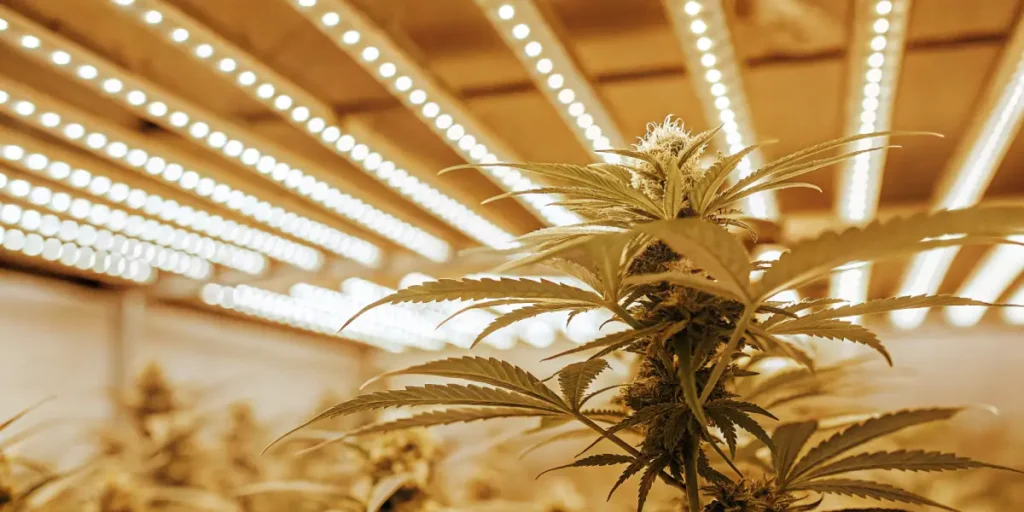
Nutrient Management for Controlled Stress
Adjusting nutrient levels is another way to apply controlled stress. Reducing nitrogen levels slightly during the flowering stage can prompt plants to redirect energy towards bud production. This results in denser, more resinous flowers.
Experiment with nutrient timing as well. Delaying feeding schedules by a day or two can create a mild nutrient deficiency. This can stimulate root growth and improve nutrient uptake efficiency over time.
It’s essential to balance nutrient availability with stress levels. While a mild nutrient deficiency can be beneficial, excessive deprivation can hinder growth and reduce yields. Careful monitoring is necessary to ensure plants remain healthy.
Optimizing cannabis yield through oxidative stress management also involves using supplements like silica and potassium. These elements can bolster plant cell walls, helping plants withstand the stress applied during controlled oxidative stress techniques.
Always keep a close eye on your plants’ reactions. Each cannabis strain may respond differently to stress. For instance, Jack Herer might need different stress levels compared to Blackberry Kush.
Choosing the Right Strains
Not all cannabis strains handle stress the same way. Some are more resilient, making them ideal candidates for oxidative stress techniques. Consider strains known for their hardiness and adaptability.
For example, Gelato is a robust strain that can withstand a variety of growing conditions. Its resilience makes it a great choice for experimenting with stress techniques.
When selecting strains for controlled oxidative stress in cannabis cultivation, research the genetic background of each strain. Strains with origins in harsh climates are often more capable of handling stress, making them suitable for oxidative stress techniques.
It’s also beneficial to consider the growth stage of each strain. Some strains may be more tolerant of stress during the vegetative stage, while others may handle stress better during flowering. Knowing these nuances can improve your cultivation strategy.
Preparing Your Grow Environment
Ensure your grow environment is optimized before inducing stress. This includes maintaining proper humidity levels and ensuring adequate airflow. Stressed plants need to recover, and a stable environment supports this process.
Invest in quality monitoring equipment to keep track of environmental changes. Devices that measure light intensity, temperature, and humidity are invaluable tools for any grower looking to apply oxidative stress.
Preparing your grow environment also involves proper soil management. Well-aerated soil can help roots access oxygen more efficiently, which is crucial when applying oxidative stress to encourage root development.
Additionally, consider the layout of your grow space. Ensuring that plants are spaced adequately can prevent competition for light and nutrients, allowing each plant to respond better to controlled oxidative stress techniques.
Regularly inspect plants for signs of stress. If leaves show signs of burning or wilting, it may indicate too much stress. Adjust your techniques accordingly to maintain plant health.
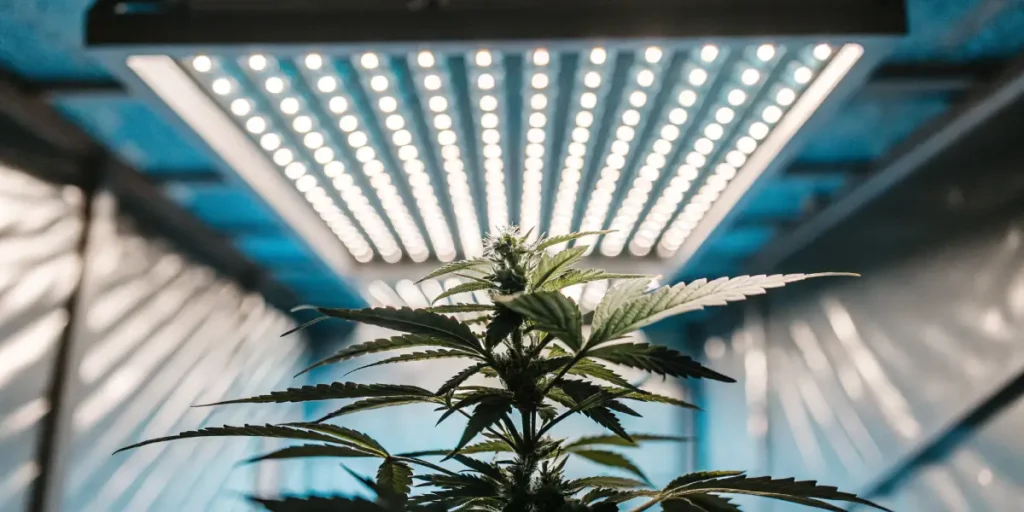
FAQs
What is controlled oxidative stress in cannabis cultivation?
Controlled oxidative stress involves applying mild stress factors to cannabis plants to enhance their growth and yield. This stress prompts plants to boost their defense mechanisms, resulting in stronger, more resilient plants.
By carefully managing environmental factors like light, temperature, and nutrients, growers can optimize cannabis yield through oxidative stress management. It’s a delicate balance that, when achieved, offers remarkable benefits.
Knowing the nuances of how to grow cannabis with controlled oxidative stress is essential for success. Growers must tailor their approach to the specific needs of each strain, ensuring that stress levels are beneficial rather than detrimental.
Engaging in continuous learning and experimentation can help growers refine their techniques. By staying informed about the latest research and trends in oxidative stress, cultivators can achieve optimal results in their cannabis crops.
How do I enhance cannabis growth with oxidative stress?
Enhancing cannabis growth with oxidative stress requires a strategic approach. Start by gradually increasing light intensity and introducing slight temperature fluctuations. These adjustments mimic natural stressors, encouraging plant resilience.
Monitor your plants’ responses closely. Adjust techniques as necessary to ensure the stress remains controlled. The key is to promote growth without causing harm, resulting in healthier, more productive plants.
In addition to light and temperature, consider the role of humidity in your oxidative stress strategy. Slightly reducing humidity levels can simulate environmental stress, helping to boost terpene and cannabinoid production.
Regularly assess the health of your plants. Look for positive indicators of stress, such as increased resin production or enhanced aroma, to confirm that your strategies for applying oxidative stress in cannabis farming are effective.
Can all cannabis strains handle oxidative stress?
Not all strains respond the same way to oxidative stress. Some, like Blackberry Kush, are more adaptable and can handle stress better than others. It’s essential to choose strains known for their robustness.
Research your chosen strains thoroughly. Knowing their specific needs and tolerances can help you apply stress more effectively, maximizing the benefits while minimizing potential risks.
Consulting with other growers and experts can provide valuable insights into strain-specific responses. Sharing experiences and strategies can help refine your approach to controlled oxidative stress in cannabis cultivation.
Keep detailed records of your observations. Document how each strain reacts to different stress levels and environmental conditions, so you can continuously improve your cultivation techniques.
What are the benefits of oxidative stress for cannabis plants?
When applied correctly, oxidative stress can increase cannabinoid and terpene production. This results in more potent and aromatic buds. Additionally, it enhances plant resilience to pests and diseases, leading to a more reliable yield.
Oxidative stress triggers plants’ defense mechanisms, promoting overall health and vitality. The result is a stronger, more productive crop with improved quality and consistency.
Another key benefit is the potential for a more compact and efficient growing cycle. By optimizing stress levels, growers may achieve faster maturation and harvest times, allowing for increased crop turnover.
Moreover, the benefits of oxidative stress for cannabis plants can extend to sustainability. Healthier plants require fewer chemical inputs, reducing the environmental impact of cannabis cultivation.
How can I optimize oxidative stress management in my cannabis grow?
Optimizing oxidative stress management involves careful monitoring and adjustment of environmental factors. Utilize tools to measure light, temperature, and humidity. Keep detailed records of your plants’ responses to different stress levels.
Experiment with various techniques and observe outcomes. Over time, you’ll develop a deeper knowing of how your plants react to stress, enabling you to fine-tune your approach for maximum effectiveness.
Engage in continuous education to stay updated on the latest advancements in oxidative stress research. Attending workshops, reading scientific literature, and participating in grower forums can enhance your knowledge and skills.
Lastly, consider the holistic health of your plants. Ensure that all aspects of cultivation, from soil health to pest management, are aligned with your oxidative stress strategies to maximize growth and yield potential.



